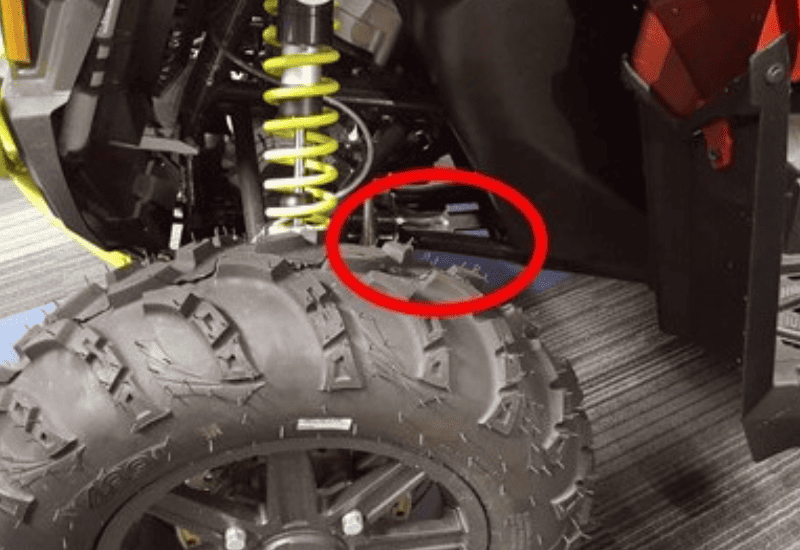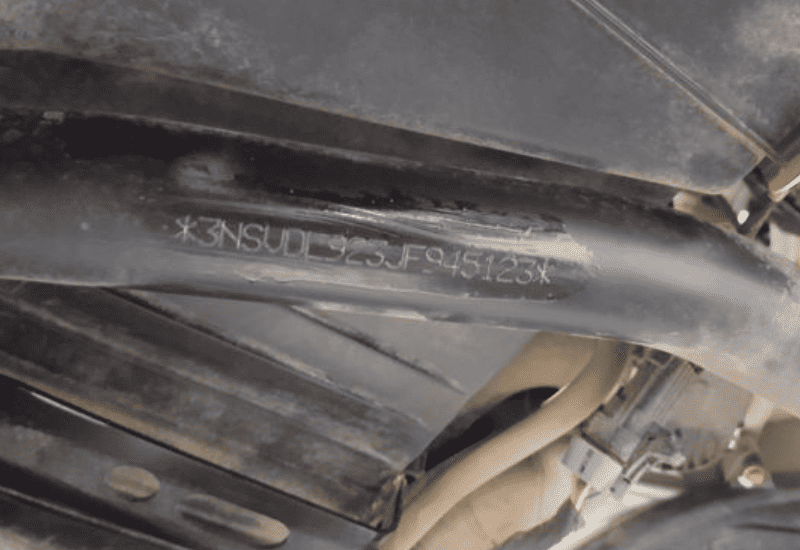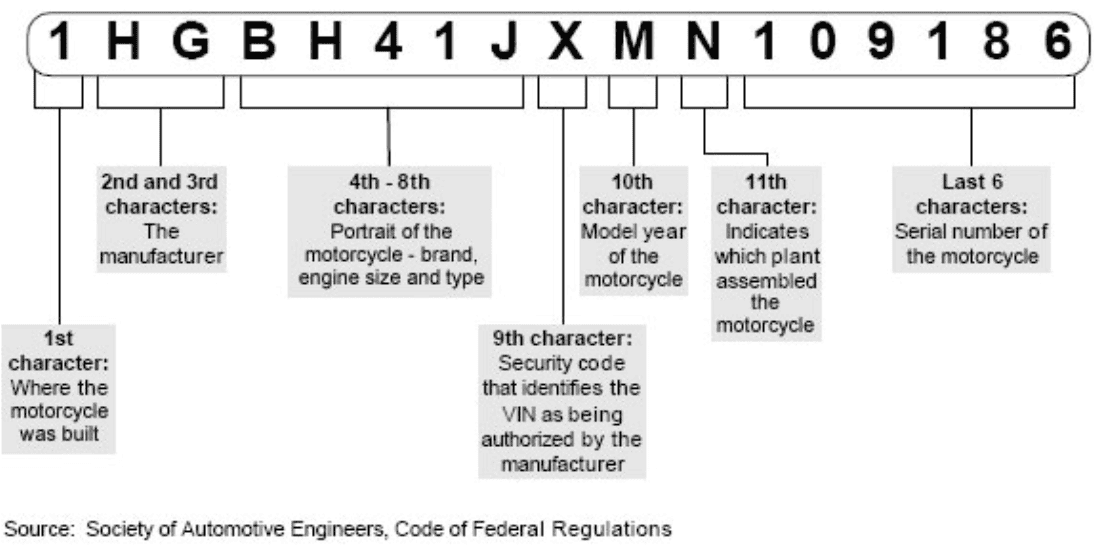All-terrain vehicles have become extremely popular over the past few decades for recreational riding and utility purposes, with new owners joining the sport every year.
And it’s not uncommon for these new owners to have lots of questions about their ATVs.
One of the first ones though is whether ATVs have VINs.
So I thought I would write this quick blog post about ATV VINs, as it’s important to understand whether these off-road vehicles have vehicle identification numbers (VINs), what purpose they serve, where to find them, and how to decode them.
Key Takeaways
- ATVs have unique 17-character VIN numbers used for registration, verifying legal ownership, and tracking in case of theft.
- An ATV’s VIN can be found engraved/stamped on the frame near the handlebars, front end, or rear end. It may also be on a plastic VIN plate sticker.
- By entering an ATV’s 17-digit VIN into free online VIN lookup tools, owners can instantly access key details about their specific vehicle including technical specs, safety recalls, theft reports, and accident history for that particular 4-wheeler.
What is a VIN Number on an ATV?
A VIN number is a unique code assigned to individual motor vehicles like cars, trucks, and ATVs during production.
This 17-character alphanumeric sequence relays specific details about that vehicle’s manufacturer, make, model year, engine size, and even country of origin in some cases.
On an ATV, the VIN serves many of the same functions as on other motor vehicles.
It allows official registration of that specific 4-wheeler with state agencies, verifies legal ownership, aids law enforcement in recovering stolen vehicles, provides technicians with manufacturing details during maintenance, and gives insurance providers an accurate history in the event of an accident.
So for ATVs, VIN numbers carry the same critical identification purposes as traditional vehicle VINs.
Owners, dealerships, DMV offices, police, and insurance agencies all reference them routinely.
Why Do ATVs Have Vehicle Identification Numbers?
There are several important reasons why ATVs have their own unique VIN numbers, which I’ve listed below.
Identifying and Registering the Vehicle
Proper registration of an ATV provides states with records of legal operation.
The process requires submitting details like the vehicle’s year, make, and model specifically identified by its VIN during initial registration and when transferring ownership.
This creates an ownership paper trail tied to each ATV for verification purposes.
Verifying Legal Ownership
The VIN is the ATV’s “fingerprint” used when confirming legal ownership, and is an essential part of its title.
It prevents fraud by matching the VIN on registration paperwork during dealer or private party sales to the number physically attached to the ATV’s frame.
This proves the seller rightly owns that exact ATV before transferring ownership rights.
Tracking in Case of Theft
Unfortunately, ATV theft can and does occur from time to time.
If stolen, the vehicle can be accurately identified as illegally obtained property when recovered based on its unique VIN and matched police reports.
This aids investigators in busting chop shops specializing in breaking down stolen ATVs for parts.
Insurance Purposes
Just like theft, accidents happen, and the VIN provides insurers with the essential details on an ATV’s year, make, and model to determine applicable coverage and process claims properly after an incident.
Specific options or special editions noted through the VIN can also influence rates and payouts.
Maintenance & Repair Identification
Technicians rely on VIN specifics like model year and engine type during maintenance or repairs to ensure they install compatible replacement parts and make appropriate mechanical adjustments.
Accessory compatibility can also depend on the age and particular features of that specific ATV.
Where to Find the VIN on an ATV

ATV owners can easily locate their Vehicle Identification Number in one of several standardized locations on the vehicle’s frame or body components:
Because of standard placements, owners can more quickly track down the VIN for their specific model whether engraved on the metal or a plastic sticker.
Plus, this also helps police, insurance appraisers, or technicians go straight to the information necessary for vehicle identification.
It’s worth noting though that physical labels and stickers applied to ATV frames can fade, tear, or fall off over time.
Because of this, having the number engraved or stamped right into the metal frame or metal components helps maintain the integrity of this all-important vehicle identifier through years of trail riding and wear and tear.
- Handlebar Frame or Neck Pillar – Check near the base of the handlebar mount where it adjoins the front frame section. Stamped or engraved numbers are commonly found on the metal frame pieces in this area.
- Front Frame Extension – Lean over above the front tires or rack down near the bottom joint where front rack tubes meet the main frame, usually opposite the driveshaft or wheel hub components.
- Rear Frame or Swing Arm Area – VIN plates or engraved serial numbers often appear on rear frame pieces near the rear axle, shock mounts, or on the metal swing arm.
- Main Frame Pieces – Also inspect along the middle frame tubes from different sides for any engraved or stamped identifiers matching a VIN format.
- VIN Sticker or Plate – Some ATVs also have plastic Information plates or stickers affixed to the main frame displaying a die-stamped VIN sequence. Check both above and below the seat.
Where to Find the VIN for Specific Manufacturers

- Polaris – Usually located inside the front left wheel well. It can also be found on either the left or right rear frame.
- Honda – Often embedded on the front cross member behind the front rack
- Yamaha – Typically found on the left side under the shift lever towards the front end of the ATV.
- Can-AM – Often printed on a label located under the seat or inside the front left wheel well on the vehicle frame.
- Kawasaki – Commonly stamped on the lower frame tubing on the left side of the engine.
- Suzuki – Typically stamped on either the left rear section or lower left section of the frame.
How to Read an ATV VIN Number

While an ATV VIN might seem complicated and uncrackable, decoding the 17-digit VIN sequence is really quite simple once you know what each letter or number represents.
- 1st Digit – Where the Vehicle was Built (1 or 4 is for the U.S., 2 is for Canada, J is for Japan, and K is for Korea.)
- 2nd & 3rd Digit – The Manufacturer, Division, Vehicle Type
- 4th – 8th Digits – Describes the Vehicles Brand, Engine Size, & Type
- 9th Digits – Security Code that Identifies the VIN as Being Authorized by the Manufacturer
- 10th Digit – Model Year of the ATV
- 11th Digit – Indicates which Plant Assembled the ATV
- 12th – 17th Digits – Serial Number of the ATV
So for example, if the ATV’s VIN was hypothetically 1HFTE340XJ1001234 this would decode as:
- 1st Digit – 1 = Made in U.S.
- 2nd & 3rd Digits – HF = Honda ATV
- 4th – 8th Digits – TE340 = Model Type / Engine
- 9th Digit – X = Check digit matches Honda VIN format
- 10th Digit – J = 2018 model year
- 11th Digit – 1 = Timmonsville, S.C. Plant
- 12th – 17th Digits – 001234 = Unique serial number
Using an ATV VIN Lookup Tool
Beyond just understanding how to manually decipher the VIN sequence, ATV owners can access useful online lookup tools that quickly decode everything about their specific vehicle by simply entering the 17-digit number.
These VIN decoder sites have access to extensive databases capturing details on ATV models manufactured around the world.
Best use cases for these reports:
- Confirm details like year, make, and model to identify compatibility with parts or accessories.
- Quickly reference engine size, transmission type, and other technical specifications.
- Research dates of any safety recalls that may apply specifically to that VIN.
- Uncover past accident history tied to that individual ATV.
- Review reported cases of theft associated with the entered VIN.
- Validate if a clear title exists before buying a used ATV.
Some reputable sites offering free online ATV VIN lookups include:
Follow these simple steps to perform an ATV VIN check lookup from your smartphone, tablet or computer:
- Locate the full 17-character VIN number on your ATV.
- Visit an ATV VIN lookup site.
- Carefully enter or paste the exact VIN sequence into the search bar.
- Tap the “DECODE VIN” button to display the full vehicle report.
- Review ATV details like year, make/model, engine size, and VIN-specific records.
Utilizing these online tools saves considerable time trying to gather technical specifications, registrations records, accident reports and safety recalls across different state agencies and insurance providers.
Everything an owner needs to feel confident when insuring, registering or purchasing parts for their ATV gets consolidated into one instantly accessible report.
The Bottom Line – Yes ATVs Do Have VINs
ATVs indeed have unique vehicle identification numbers.
While their frames take more dirt than road miles, ATVs must still follow vehicle registration, verification and insurance procedures that rely on a VIN number.
Understanding where to find that VIN, how to break down the alphanumeric sequence, and accessing VIN history reports gives owners greater insight into their ATV, beyond just its visible condition.
Because of this, both state agencies and riders reference this all important number regularly.
Whether registering, insuring, or maintaining the ATV.
Recent Posts
Is Can-Am Better Than Polaris? This question has been debated for years, sparking intense debates in off-road communities and showrooms. As two titans in the world of ATVs and UTVs, Can-Am and...
Whether you're an adult looking for a new adventure or introducing your kids to the sport, finding the best beginner dirt bike is crucial to kick-start your off-road journey on the right...

